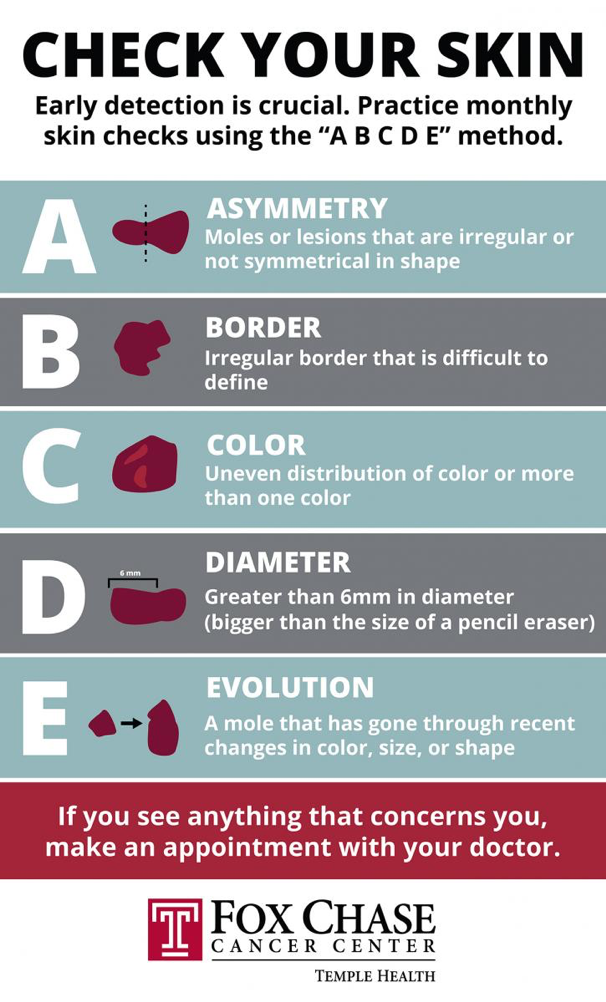
How to Self-Check for Signs of Skin Cancer
-
It's always a good time to evaluate your skin’s health and do a self-check for any concerning areas.
According to the American Cancer Society (ACS), skin cancer is by far the most common type of cancer in the United States. It is estimated that 1 in 5 Americans will develop a skin cancer at some point in their lifetime, and as is the case with any type of cancer, treating it early is incredibly important.
“Catching skin cancer early is key. When detected early, most skin cancers can be treated effectively and are often curable,” said Jeffrey M. Farma, MD, FACS, a surgical oncologist and Surgical Director of the Melanoma and Skin Cancer Program at Fox Chase Cancer Center.
One of the most important steps to take towards identifying skin cancer early is to frequently self-check your skin to identify any areas of concern that should be brought up to a dermatologist.
“When you know your own skin markings—moles, freckles, and blemishes—you’re likely to notice changes that occur,” said Farma. “If a mole or marking has gone through recent changes in color and/or size, contact your doctor as soon as possible.”
Know your ABCDEs
While it’s important to check your own skin for signs of cancer, it can be difficult to know what you are looking for.
The ABCDE guide can help you figure out if you have any spots on your body that should be checked by a dermatologist:

If you find an area of concern during a self-check, it is best to make an appointment for further evaluation, even if the spot seems small or insignificant.
For more information on skin cancer and the Fox Chase Cancer Center Melanoma and Skin Cancer Program, please call 888-FOX-CHASE.
